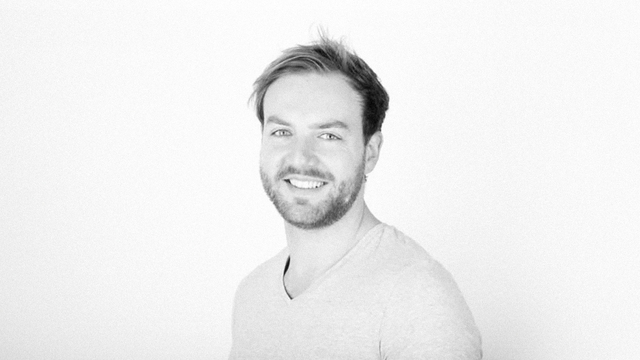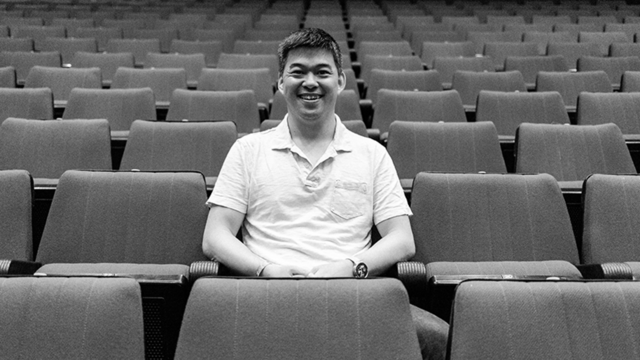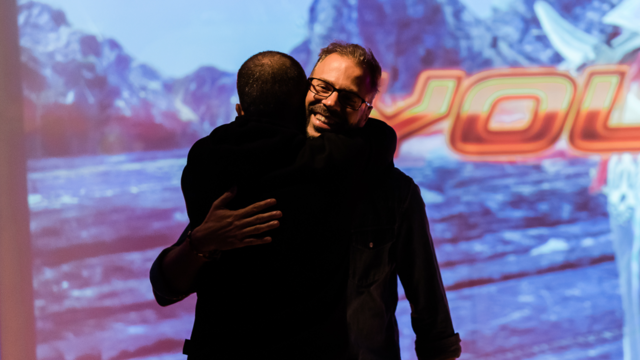Meet Stella Madeline Levy, Production Manager at Blur Studio, a company that will be at Career Camp mentoring and looking for talent! She is currently working on the fourth season of Love Death and Robots with the rest of the team, which is a small crew of 10 people inside of Blur that coordinates all the episodes with the different studios, Blur included. "As the Production Manager, I work directly under Victoria Howard, our incredibly talented Supervising Producer, and I make sure the week-to-week runs smoothly and that we stay on schedule and budget. I depend immensely on my coordinators, Peter Rosemeyer and Sarah Hayes, to help me schedule meetings and anticipate problems before they become unmanageable. I have a fantastic bird’s eye view of how all the episodes are made, and a pretty unbeatable access to all the creative leaders of the series", adds Stella.
How did your career journey begin?
I grew up in San Francisco, California. In high school, I was a part of SF Art and Film for Teenagers which allowed me to see arthouse films and go to galleries. Without this program, I would have been too intimidated to approach those pieces of media and institutions. During high school, I worked at the indie movie rental house Video Wave which still exists today. Reminder: this happened before streaming, so having extensive access to media was unheard of. In my junior year of high school, I went to The Oxbow School, a one-semester high-school art boarding school that allowed me to create my first and last stop-motion animation. While I loved being in art school, it also taught me that being a full-time artist was not my long-term path. I didn’t have the patience to move an image frame by frame for six weeks ever again, but I respected anyone who did.
After graduating high school, I attended Boston University and received a Bachelor of Science in Film/TV Production. While attending school, I worked for BU Today, the university's online publication. My resume stood out because I had worked in a semi-professional work environment with a set pipeline and production style. I had a number of well-produced videos under my belt.
I got my first production assistant job from an online ad at a VFX company called Zero VFX. I watched the company expand from 25 employees in Boston to 90 people, with a second office in LA. Most weeks, I worked 60-80 hours a week and learned as much as possible. I was quickly promoted to coordinator, and in two and half years, I worked on eleven movies. I was burnt out from constantly moving and working bi-coastally. So I went to Blur Studio and officially moved out to LA. I have been with Blur ever since.
What’s your favorite part about working at Blur?
I love making art that I am genuinely proud of, which I found working on Love Death and Robots at Blur Studio. Sometimes I struggled with VFX because you usually don’t see it if it's done correctly. When working in animation, everything is on the screen in a way that people acknowledge and appreciate. VFX and all digital artists are a vast invisible army. I am so grateful for the people I work with. I know everyone says that. Our team's ability to make everything great while still supporting one another is a tricky balancing act. I can’t believe how many successful women I work with, from our executive producer Jennifer Miller who created the branding and looks for the show. Victoria Howard is our headstrong producer. She taught me that you want to work with your friends, and even when she has to be firm, she knows how to continue the working relationship with cohesion. Jennifer Yuh Nelson has 30 years of experience and is an expert storyteller. She has taught me how to stay calm under adversity and not cater to other people's moments of weakness.
How does a regular day look for you? Take us through it!
I work on the show from pre-production to marketing and public relations, but I can speak most to a regular day in animation production. The software I use the most is the Google suite, Shotgrid, Syncsketch, RV, and Movie Magic. My first production job was taking meeting notes in Shotgrid while running the dailies in RV, and scheduling meetings on Google calendar. But now my day has everything from legal and clearances to creative reviews. The mornings are full of meetings with animation partners and our internal team. The afternoon is spent looking at the weeks ahead. I’ll flag upcoming milestones to vendors. A great example is that we can’t finish an episode's music or sound design unless the animation is locked. If we seem to be taking longer on animation, I will check in with the vendor on their schedule, let downstream teams know that the schedule may be impacted, and see what else we can move around, so we don’t waste anyone's time. I think what makes a production person strong at their job is their ability to keep the train running while still looking ahead and ensuring no broken track.
Tell us about your involvement with bringing Love, Death, and Robots to Life and the process behind it! How was it like?
I am blessed to work with a team where my opinion has always been heard, even from the first season as a new coordinator. I remember one of the first scratch voice-over sessions I did with the show creator, Tim Miller, for the episode Alternate History. Hitler is spewing lines of cursing in English and German. Tim had given a few curse words and turned to me for something fowl to say. I spewed off a line of dialogue, to which he politely nodded and said, “that was too far, Stella,” As the youngest team member, I was always called on for a gut check of if our audience would resonate with our content. My most significant impact can’t be seen on screen; it is my relationship with our partners. Just as I have always valued my digital artists, I feel the same desire to make each episode a positive experience for all 3000 artists across the globe, even if I never meet them. I plan diligently so vendors have the resources they need and help flag the next step in production, especially when it’s something outside their studio. I also work with the rest of LDR production and the vendors to problem-solve. I remember in season one, we had a vendor that needed help with their rendering to the point that they were afraid of delivering the show. Our talented Supervising Creative Director Jerome Denjean brought in other CG supervisors more familiar with the software and pipeline who helped advise on rendering. The episode looked great, and no one would have known.
How do you stay inspired and motivated?
Every day I see a new image that puts butterflies in my stomach. I have been in animation/VFX production for nine years now. I know how to pace myself, so I don’t burn out like when I was younger. I work with people who know me well; I laugh with them daily and like them. I get to work with other women on art I am truly passionate about. I feel accepted to be who I am, which is an intense nerd. Ultimately even with the hard days, of which there are many, I believe that digital art is where we are still pushing the boundaries. I am so lucky to be in a place that is constantly trying new things. I will never get bored.
What advice would you give to someone interested in working as a Producer?
If you want to be a Producer, there is no straight road. Starting as a production assistant is highly advisable, but there are other ways to get there. None of the other production people I work with went to school to be animation producers. I knew early on that I wanted to be a producer because I didn’t feel in my element being on set, but I didn’t know about VFX or animation production until I was in it. It took like a fish to water. Many people think you need money and connections to enter the film industry. Those things certainly help, but I got my first job off Craigslist and the second one from LinkedIn. Earning a degree doesn’t guarantee a path forward, but it helps. I graduated with $50k student loan debt. My first few years were a financial struggle with a lot of roommates. If you are starting your journey in production or digital art, I recommend exploring affordable options like online classes before jumping into school debt. Look outside the biggest animation studios. Many smaller studios don’t get the same number of applicants. You can have a more considerable impact and move up faster. Don’t think your first job has to be your perfect match. Once you build connections, the next step is more accessible. Good luck!
Thank you, Stella!




